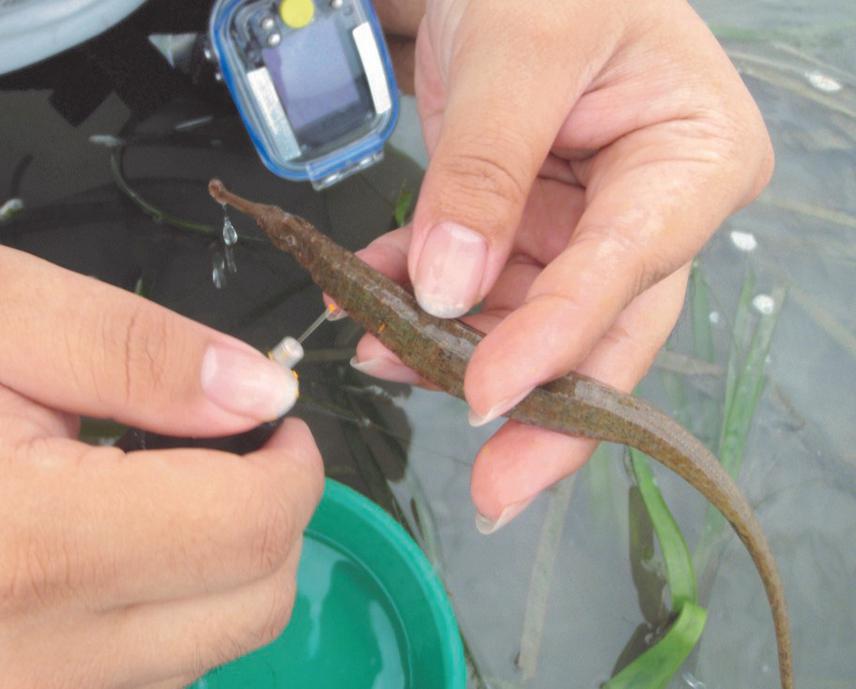Choo Chee Kuang
This project aims to arrest the decline of the seahorse population by involving the coastal community in monitoring coastal resources.

Our aim is to use seahorse as a flagship species in the conservation of the Pulai River Estuary. This estuary is the only place in Malaysia which supports a significant population of the Spotted Seahorse, Hippocampus kuda. But since the 1990’s, port development in the area had resulted in large tracts of seagrass meadows and mangrove forests being cleared and the coral reefs plagued by siltation. Seahorse population had declined more than 70% within a decade. This is due primarily to their slow moving nature, lengthy parental care and low fertility. The fisheries resources had been severely impacted, taking tolls on the livelihood of the traditional inshore fishermen and the indigenous people.
Conserving the seahorse serves as a direct mean to protect the seagrass, mangroves, coral reef habitats, and other endangered species in the estuary. Fisheries resources can be enhanced which help improve the livelihood of the coastal communities.
SOS started a volunteer program in 2005, involving the public and local community in seagrass monitoring, seahorse and fisheries survey. Besides generating awareness, the volunteer program helps to produce data necessary for change detection and identification of high conservation priority areas. The survey data can also be used for the establishment of a conservation plan. Exhibitions, talks, meetings and video showing are also carried out targeting school kids, coastal fishermen and policy makers.
This project involves the coastal community as team members. Their inputs in the design, implementation, monitoring and evaluation will be crucial to gear this project towards a community-based conservation. We will organize workshops, talks and provide field training to help the coastal community develop capacity and learn the techniques associated with coastal resources monitoring.
Marine education and awareness activities carried out in village schools, through the development of modules on the marine animals and ecosystems, and site visits, could instil the kids’ interest, understanding and awareness to protect the marine life. These activities will help pave the way for them to become the future stakeholders of the environment.
This project will also assists in policy development for the conservation of the area. We have earlier proposed to the State Park to designate this area for the protection status. The survey baseline data can be used in identifying areas of high conservation priority (based on seahorse abundance, dugong foraging grounds, seagrass diversity and abundance, distribution of commercially important fishes and invertebrates) for the effective conservation and management of the estuary.